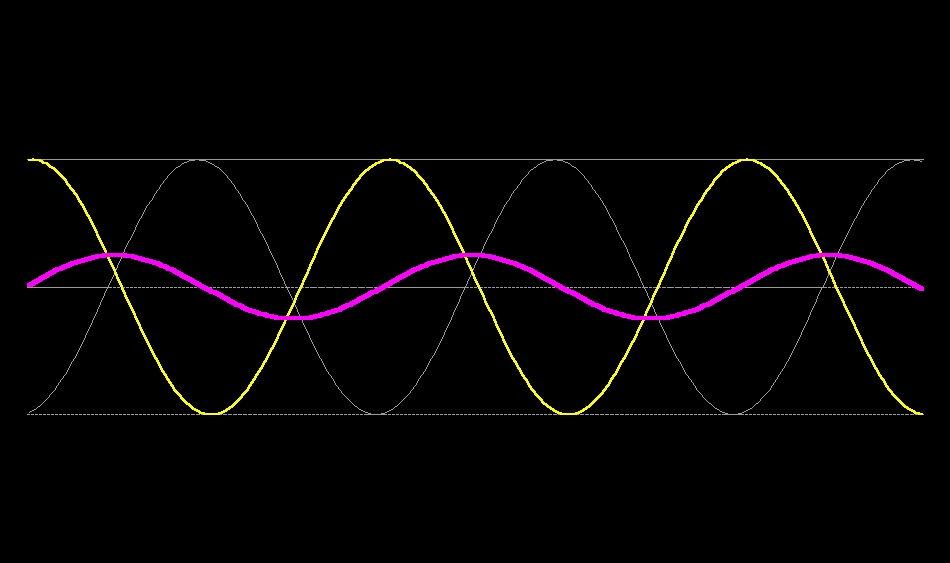How to determine whether a wave is travelling or standing?
The "rule" you have given is a little simplistic. To use it you have to be able to write the wave solely as a function of $(kx-\omega t)$ or of $(kx + \omega t)$. That is because the thing in the brackets, the phase of the wave, has to be kept constant to apply a meaning to a direction of travel.
e.g. take $f(kx-\omega t)$. If $t$ increases, then you can only keep the phase constant by increasing $x$. So this wave travel towards positive $x$ as $t$ increases. Try experimenting with this simulation. A standing wave cannot be written solely as $f(kx-\omega t)$ or $f(kx+\omega t)$, so is not a wave travelling in a single direction. It is the superposition of two waves of equal frequency and amplitude travelling in opposite directions.
In general, waves can always be written as the superposition of multiple waves travelling in different directions.
Your final example can be decomposed into 4 travelling waves of the same speed, but different wavelengths, 2 travelling towards positive $x$ and two towards negative $x$. $$ y = \frac{1}{2}(\sin [x-t] + \sin[x+t] +\sin[2x-2t] + \sin[2x+2t])$$
What you have done is decomposed a standing wave into two travelling waves of equal amplitude, speed and frequency which are travelling in opposite directions.
Your equation $y=\cos x \sin x \ + \cos 2x \sin 2x$ has no time dependence and so can only represent a wave profile at some instant of time.
It is like a photograph of a wave.
What you need to look for are two terms multiplied together.
One term which depends on the position from the source eg $\sin kx$, and the other term which depends on time eg cos $\omega t$ where $\frac \omega k = c$ the speed of the wave.
This will result in the wave profile not moving along.
So when you photograph the wave the maximum displacement will always be at the same position as will the minimum displacement.
An example is $y(x,t) = A \sin(kx) \cos (\omega t) $
Here are your two travelling waves superposing to form a standing wave.

A wave is a function like $f(x,t)=A(x+vt) + B(x-vt)$. Standing waves are waves in suitable superposition. You can see if a wave is a stadading wave or not by locating points of the wave that is fixed all the time. Sometimes this points are at boundary, in Newman boundary conditions you have such a point but they are not in the boundary. Your example is a wave if you make $x\rightarrow x\pm vt$. You could think that $y$ is a wave produced by a sum of $A$ and $B$, but this is not the case. There is no $A$ and $B$ that builds this function $y$. There is a trick to see that, you verify if this function obey the wave equation: $$ \frac{\partial^2 y}{\partial t^2}=v^2\frac{\partial^2 y}{\partial x^2} $$ If the function don't obey the wave equation, this means that is not a wave.
Because $y$ has not $t$-dependence this means that $\partial^2_x y=0$, and this is not the case. Actually, the only standing wave that don't dependt on time is $y=a+bx$. Usually stading waves depends on time. A example: $$ y(x,t)=\frac{\cos(k(x+vt))+\cos(k(x-vt))}{2}=\cos(kx)\cos(\omega t) $$ Every time that you can separate the $x$ and $t$ such that at final you have $f(x)g(t)$, you have a standing wave. Note that $f(x)g(t)+h(x)s(t)$ is not a stading wave in general.